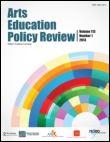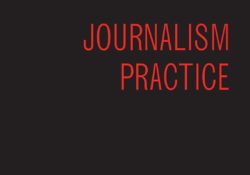tandfonline.com har udgivet en rapport under søgningen “Teacher Education Mathematics”: ABSTRACT ABSTRACT This review article focuses on use of an escape room as a didactic tool in teaching and learning, as identified in empirical studies that have examined the use of escape rooms in educational contexts. The review studied the methods used to study escape rooms, what the focus of attention was, what the reported use was, and implications this has for the use of escape rooms for teaching and learning. Our analysis showed that most studies are concerned with the implementation and use of an escape room in relation to four fields of attention; scenario, curriculum, 21st-century skills, and motivation. Overall, the reviewed articles indicate that more studies are needed on the use of escape rooms for educational purposes.… Continue Reading →
Like this:
Like Loading...
eric.ed.gov har udgivet: This guide was prepared to assist in determining the mathematics that should be included in drafting, electricity, electronics, and machine shop programs. Information for the guide was obtained by asking teachers from every postsecondary vocational school in Kentucky to respond to a questionnaire listing mathematics competencies for their specialty by marking each competency as “needed” or “not needed.” The guide is organized in four sections. The first section provides a background for understanding and using the handbook information. The “how” and “why” of what was done are explained in this section. The second section deals with the mathematics competencies for the four programs. Listed are common competencies, competencies specific to programs, and information on using the competency information. Since it may be difficult to visualize a mathematics… Continue Reading →
Like this:
Like Loading...
tandfonline.com har udgivet en rapport under søgningen “Teacher Education Mathematics”: Abstract Formulae display:?Mathematical formulae have been encoded as MathML and are displayed in this HTML version using MathJax in order to improve their display. Uncheck the box to turn MathJax off. This feature requires Javascript. Click on a formula to zoom. Abstract It has been asserted that the test-based accountability of No Child Left Behind (NCLB) increased instruction in tested subject areas reading and math, leading to reductions in arts education. We tested this using two waves of data, before and after NCLB implementation, in a difference-in-differences design. The analyses indicated that the total teacher workforce increased substantially during this time period, while the percentage of reading and math educators remained constant, leading to an overall increase in the teacher… Continue Reading →
Like this:
Like Loading...
eric.ed.gov har udgivet: This Teacher Education and Mathematics (TEAM) content module focuses on approximation and estimation. It consists of: (1) an instructor’s text; (2) an instructor’s guide and solutions to student exercises; (3) student materials and exercises; and (4) student summary and review. The instructor’s text provides specific directions for guiding lessons and commentary on mathematics content and mathematics attitudes. This is accomplished by a “facing pages” format whereby the right-hand page provides step-by-step teaching directives while the left-hand page provides teaching insights, other options of instruction, and psychological or attitudinal strategies, when appropriate. The instructor’s text also contains content objectives, specified to indicate the scope and structure of the module, and student evaluation materials. The instructor’s guide and solutions to exercises provides teaching approaches and solutions to problems. Student… Continue Reading →
Like this:
Like Loading...
eric.ed.gov har udgivet: This Teacher Education and Mathematics (TEAM) content module focuses on probability. It consists of: (1) an instructor’s text; (2) an instructor’s guide and solutions to student exercises; (3) student materials and exercises; and (4) student summary and review. The instructor’s text provides specific directions for guiding lessons and commentary on mathematics content and mathematics attitudes. This is accomplished by a “facing pages” format whereby the right-hand page provides step-by-step teaching directives while the left-hand page provides teaching insights, other options of instruction, and psychological or attitudinal strategies, when appropriate. The instructor’s text also contains content objectives, specified to indicate the scope and structure of the module, and student evaluation materials. The instructor’s guide and solutions to exercises provides approaches and solutions to problems. Student materials and exercises… Continue Reading →
Like this:
Like Loading...
eric.ed.gov har udgivet: This Teacher Education and Mathematics (TEAM) module is designed to increase awareness of the fact that, historically, women have contributed to mathematical knowledge and mathematics education, that they continue to do so at the present time, and that these women may serve as important role models. It contains an instructor’s text and student materials. The instructor’s text provides (1) specific directions for the instructor to follow in guiding lessons and (2) commentary designed to help in building positive mathematics attitudes. The directions tell how to proceed step-by-step, while the commentary articulates a philosophy and provides explanations, attitudinal interventions, and instructional alternatives. This is accomplished with a special “facing pages” format. The right-hand page provides teaching directives, while the left-hand page, “commentary and notes” (or just “notes” when… Continue Reading →
Like this:
Like Loading...
eric.ed.gov har udgivet: This paper describes the EQUALS teacher education program to assist educators in increasing participation of females in mathematics courses. The goal of the program was to increase educators’ awareness of the issues surrounding the problem of mathematics avoidance among females, and particularly the future consequences for those students who avoided mathematics. Teaching strategies and materials were provided to actively engage students in doing mathematics and understanding the relevance of math to their future career options. The materials were presented in a workshop format to K-12 educators, as well as counselors, curriculum specialists, and principals. The impact of the workshop on participating educators was measured by surveying their satisfaction with program elements, their implementation of program activities, and their continued professional growth. (Author/DS) Link til kilde
Like this:
Like Loading...
eric.ed.gov har udgivet: Children benefit academically when parents and educators work together. For this reason, parents’ involvement in their children’s education is a priority of the “No Child Left Behind Act of 2001.” But a strong connection between parents and educators does not come about automatically. Both parties may need to learn new roles and skills and develop the confidence to use them, especially as parents move beyond traditional activities, like helping children with homework, and toward shared responsibility for school improvement. Intermediary organizations, like federally funded Parental Information and Resource Centers (PIRCs), can help. Drawing on lessons learned from five PIRCs across the country that have been meeting this challenge, this guide shares promising strategies for increasing effective parent involvement. It explains “how to” strategies that the Parent Information… Continue Reading →
Like this:
Like Loading...
tandfonline.com har udgivet en rapport under søgningen “Teacher Education Mathematics”: ABSTRACT ABSTRACT This article locates media literacy both theoretically and empirically in the public practices carried out by journalists and journalistic actors in the case of Finland. In the theoretical section, the paper discusses the activities under the frameworks of non-formal education and strategic audience development as part of media organisations’ work. In the empirical section, central journalistic actors and their typical best practices are identified. These activities are grouped into three categories: media education on, in and via journalism. It is found that the initiatives aimed at promoting journalistic media education can be seen as focusing on a specific form of journalism literacy in which drawing the boundaries of journalism and non-journalism is a distinguished feature. The paper concludes… Continue Reading →
Like this:
Like Loading...
eric.ed.gov har udgivet: This report presents the findings from Project Tomorrow’s 2007 Speak Up Survey, informing international discussions about how to improve science learning in the 21st century through an exploration of student, teacher, parent, and school leader attitudes about science education. Project Tomorrow administered its survey in all 50 United States, the District of Columbia, American Department of Defense Schools, Canada, Mexico, and Australia. The top participating states included: Texas, California, Arizona, Illinois, Alabama, Maryland, North Carolina, Pennsylvania, Florida, and Michigan. Project Tomorrow surveyed 319,223 K-12 students, 25,544 teachers, 19,726 parents, and 3,263 school leaders. Respondents were from 3,729 schools and 867 districts. Ninety-seven percent were from public schools; three percent were from private schools. School locations were 32 percent urban, 40 percent suburban, and 29 percent rural. Forty-three… Continue Reading →
Like this:
Like Loading...


